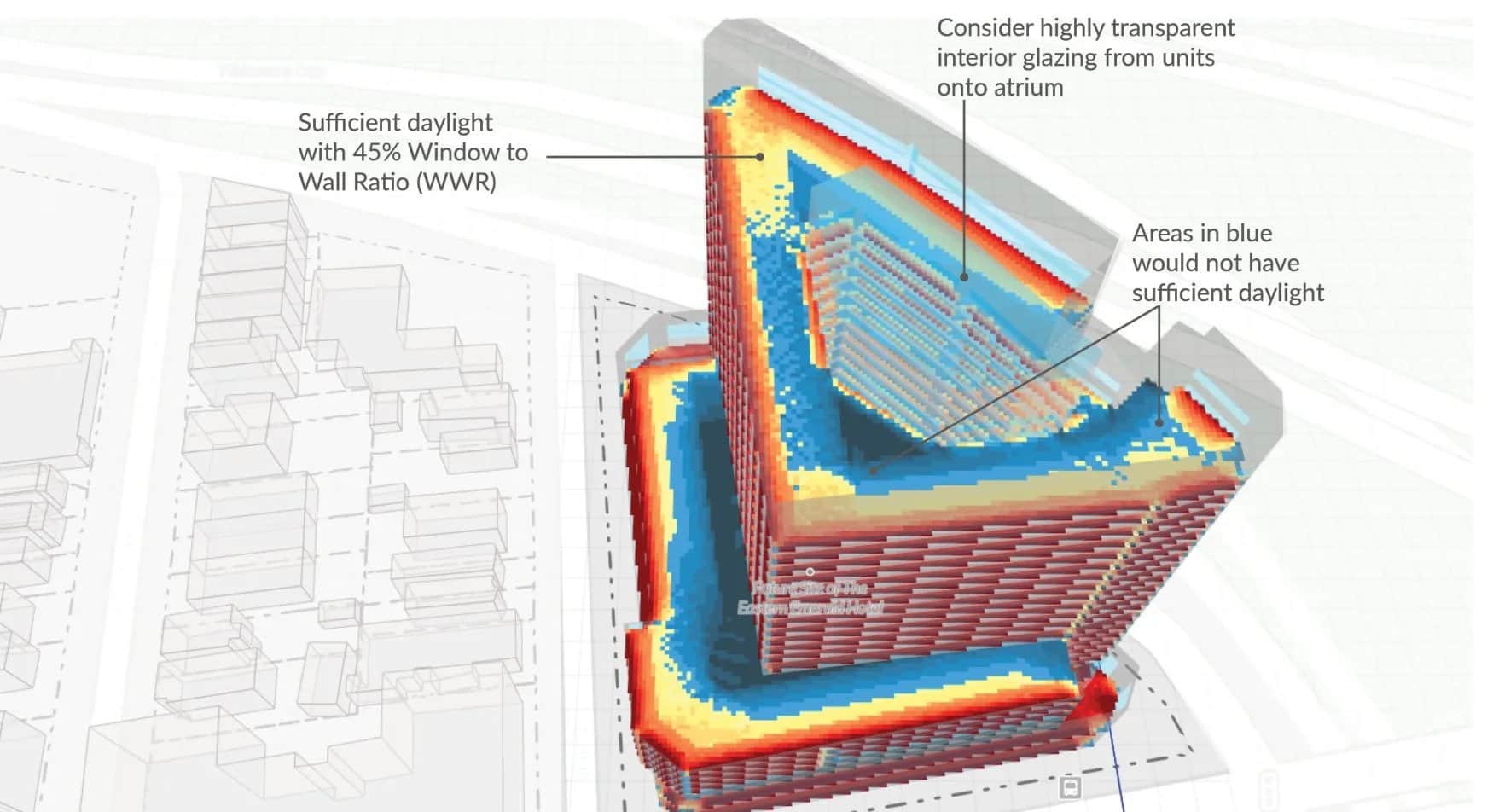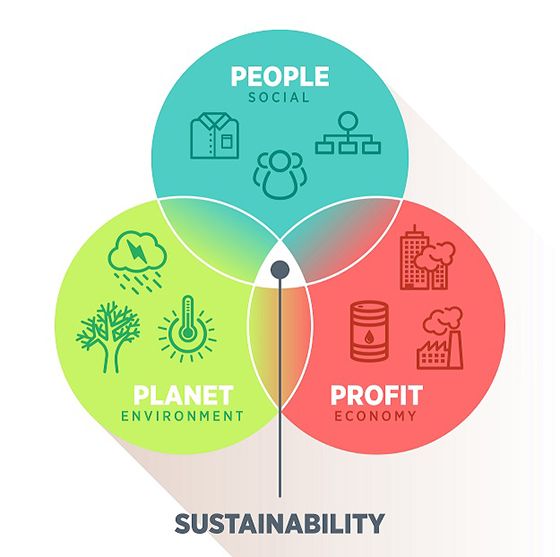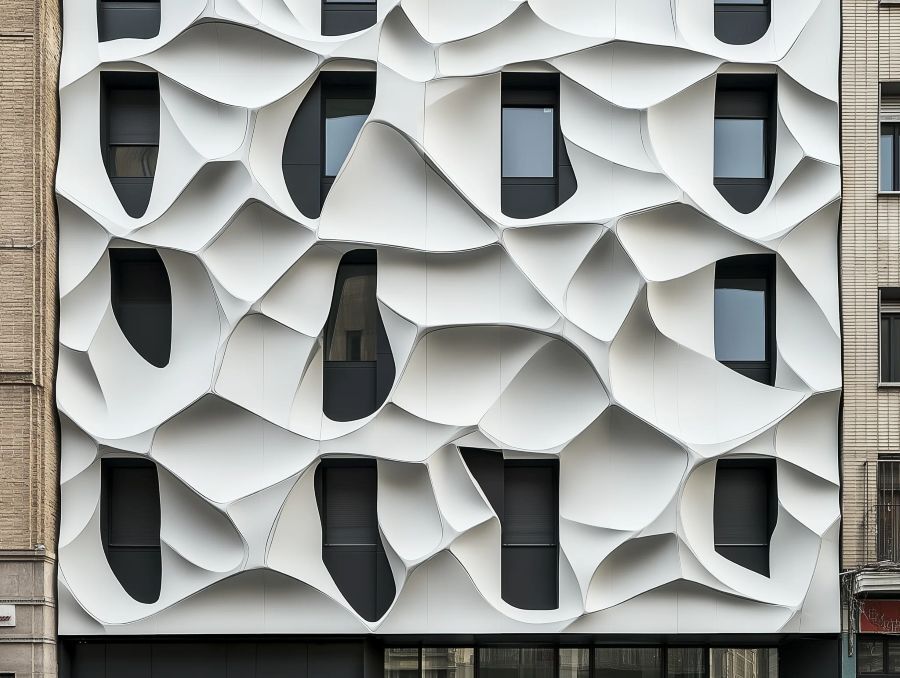High-Performance Building Design with Computational Design Techniques

Table of Contents
How many architects actually understand and embed high-performance building design within their design processes? Not as many as sustainable design surely. High-performance design also contributes to sustainability, going beyond expectation with the best design quality outputs. But, the question here is – how do we define high performance in building design?
What Is A High Performance Building?

A high performance building is one that optimises not just the spatial programmes, but also all high-performance attributes covering energy efficiency, accessibility, durability, safety, sustainability and more. It is not just an energy-efficient building, but better.
While the term may sound rather fancy and hi-tech, it essentially covers what a building should have and perform. Therefore, these high-performance attributes cover everything from functionality and operations to sustainability and durability. In most cases, high-performance design is also data-driven, collected from numerous analyses and simulations run in different applications. Ensuring accuracy, they highlight results for both the present and future.
High Performance Building Design
High performance building design is a process of integrated approach using various parameters surrounding building design for optimised design excellence. The entire process is a holistic approach to designing high-performing buildings that are -
- Sustainable environmentally and economically
- Energy efficient
- Prioritising occupant’s well-being through design
These three points essentially summarise all the attributes a high performance building should have. And naturally, it falls onto the architect to ensure all aspects are fulfilled.
Find out what sustainability really means in architecture with our Guide to Sustainable Architecture.
Features of High-Performance Building Design

High performance building design does not just cover energy efficiency, but also water supply and treatment required for the building. A resource and energy-intensive process to meet the demands, it consumes over 30% of total energy consumption of municipal governments, according to the U.S Environmental Protection Agency. The high energy consumption rates urge both the architects and developers to include water recycling or reuse in the best way possible.
A high-performing building also takes into account its occupants’ wellbeing. People spend most of their days indoors, whether it’s in a house, an office or a gym. Good interior design not only provides thermal comfort and good ventilation, but does all those while being sustainable and energy efficient. A poorly-performing design can affect productivity with low-quality indoor spaces while increasing chances of health issues.
Reducing carbon emissions and ecological damage are also features that high performance ‘green’ building design should aim for. Every feature, holistically, brings benefits to both occupants and the owners from the first design stage until demolition. We will look more into the benefits in a later section.
What Is Computational Design?
Computational design is the use of computation in design through a sequence of logical processes. It is the next step in the digital design process, which previously, has only been used to visually present the design. However, computational design has changed the designed process itself for the better with form finding, analysis, and simulation workflows. Computational design makes use of parameters, algorithms and visual programming to manipulate and optimise the design.
The Use Of Computational Design In Architecture
The field of Architecture has perhaps seen the best improvement with the aid of computational design. Architects can rely on it to design a single building element (like these facades) or whole buildings.
Despite the complexity these designs offer, computational design ensures each output is optimised to the best. Architects are now increasingly utilising computational design to explore dynamic and fluid design as well as to study the structures and systems found in nature.
How Do We Integrate High-Performance Building Design?

How do we design a building for high performance? The very first step into integrating high performance building design is the same as any other design process – a comprehensive site analysis – telling us it is no different from how architects usually design.
Understanding site topography, microclimate and environmental conditions, as well as limitations and opportunities, can help architects envision how the building can serve in both present and the future. They envision how the building can serve beyond its functional requirements by developing strategies that work with the local conditions. That is the next stage.
Then the architect can identify the high-performance features to be integrated into the project. To do so, we need to refer to building codes and standards as well as green building certifications. They include specific criteria on integration, energy, ecosystems, resources, and wellbeing. Based on these criteria, the performance benchmark can be set for each high-performance category.
Once all these are taken care of, the architect can initiate the design process using the data for informed decision making. We find many architects turning to passive strategies for high-performance building systems. Passive design strategies lower the dependence on energy and instead, make use of what the natural environment has to offer.
The Role Of Project Stakeholders in an Integrated Design Process
While we have been talking explicitly about architects, a truly integrated design approach requires the inputs of other project members – MEP, civil and structural engineers, interior and landscape designers. An informed and integrated design process necessitates a collaborative approach on all fronts.
For example, lower heat gain will reduce air-conditioning requirements to achieve a good thermal comfort level. The analysis run by sustainability engineers can give the necessary data that helps architects design the right building form or facade to reduce the heat gain.
Building energy analysis is an important step in the sustainable design process. Learn more about it in our comprehensive guide.
What Is The Role Of Computational Design Here?
Where does computational design come in? Computational design tools have proven to be invaluable in providing the necessary analytical data through analysis and simulation. Computational design in general can optimise design with various parameters which may be too complex and tedious manually.
Many of these tools like Honeybee and Ladybug can analyse and determine occupant comfort, energy consumption, daylight, and heat gain analysis. Moreover, architects can also create custom tools and workflows that support sustainable design processes.
Tools Associated With High Performance Building Design
To create high performance building design, we need the help of many analysis and simulation tools.

Ladybug
Ladybug provides detailed climate analysis and data in both 2D and 3D interactive graphics. It can also evaluate the initial design options through view analysis, sunpath and radiation analysis.
Honeybee
Honeybee can perform detailed daylight and thermodynamic modelling, as well as simulates and visualise radiation simulation.
Green Building Studio
This is a cloud-based service that can run building performance simulations. A tool used for energy optimisation, it can work alongside BIM using Autodesk Revit. This integration eases the process to create energy models and run building performance analysis.
Fun fact: Green Building Studio is part of the curriculum for our BIM Professional Course!
Cove.Tools
Cove.tools is an all-inclusive set of tools for high performance building design. It comes in 5 different tools covering over a dozen different analysis features. It allows architects and engineers to use data-driven design to achieve sustainable design solutions.
Climatestudio
ClimateStudio is one of the most accurate environmental performance analysis software. It works best for simulations for daylighting, energy efficiency, thermal comfort and other measures of occupant wellbeing. It is available as a plugin for Rhino 3D, version 6 and above.
Benefits Of High Performance Building Design
Various parameters (we are not talking about parametric modelling here) are involved in any building design. As seen above, there are so many items an architect has to consider when designing high performance building systems. The question now is – why should architects constantly aim for such building design?

Environmental Benefits
High performance green building design generally decreases energy consumption and CO2 emission. It makes use of passive design strategy thereby cutting down on electricity consumption, including indirect consumption generated by activities such as water consumption. Using smart and/or advanced construction materials also brings an added benefit of reducing CO2 emission.
Economic Benefits
High-performance buildings are an investment. Substantially high for the initial cost, they however bring long-term economic benefits through lower operating and maintenance costs and increased market value. When buildings perform well, their asset value naturally increases. We can measure the performance of a building against the standards of green building certifications.
Occupant Wellbeing
Improving occupants’ wellbeing is both a feature and benefit of high performance design. The indoor environmental quality is improved through good ventilation with less pollutant and odours, thermal comfort and daylighting. In office buildings, these factors contribute to higher employee productivity and less sick leave. Less carbon emissions does not just improve pollution but also improves air quality and general wellbeing of people.
Barriers To High Performance Design
The High Cost Of Investment
The high initial cost of high performance design has been the common challenge in the industry against its implementation. A better understanding of design and building naturally will have architects striving for the best in all aspects, but it also means the overall costs may increase. To avoid such circumstances, architects may not choose to integrate high performance design in their process.
The Lack Of Understanding
The general lack of knowledge about high performance building design and their benefits have played a role in its integration. Many architects are now familiar and are implementing sustainable design practices but we need to do more to familiarise ourselves with high performance design.
The Lack Of Motivation To Fund High Performance Design
Many in the industry would prefer high visibility design, i.e. flashy designs, over energy and high performance. This is why we see many buildings with dynamic forms and designs but their performance is something rarely talked about.
These challenges are expected to be short-lived. As more architects become aware of high performance design and its benefits, we will see an increase in such design within the architecture and construction industry. Soon, more and more buildings will not only look ‘cool’ and fluid thanks to computational design, but also be optimised, functional and sustainable.
Learn how to integrate high performance design in your workflows using computational design with Novatr’s Master Computational Design course. You will be learning from the basics till the level of a sustainability expert using various computational analysis tools.
For more insights and trends on computational design and sustainability, head over to our Resources.

 Thanks for connecting!
Thanks for connecting!

-1.png)
-3.png?width=767&height=168&name=MCD%20B%20(Course%20Banner)-3.png)
.png)
.jpg)
.jpg)




